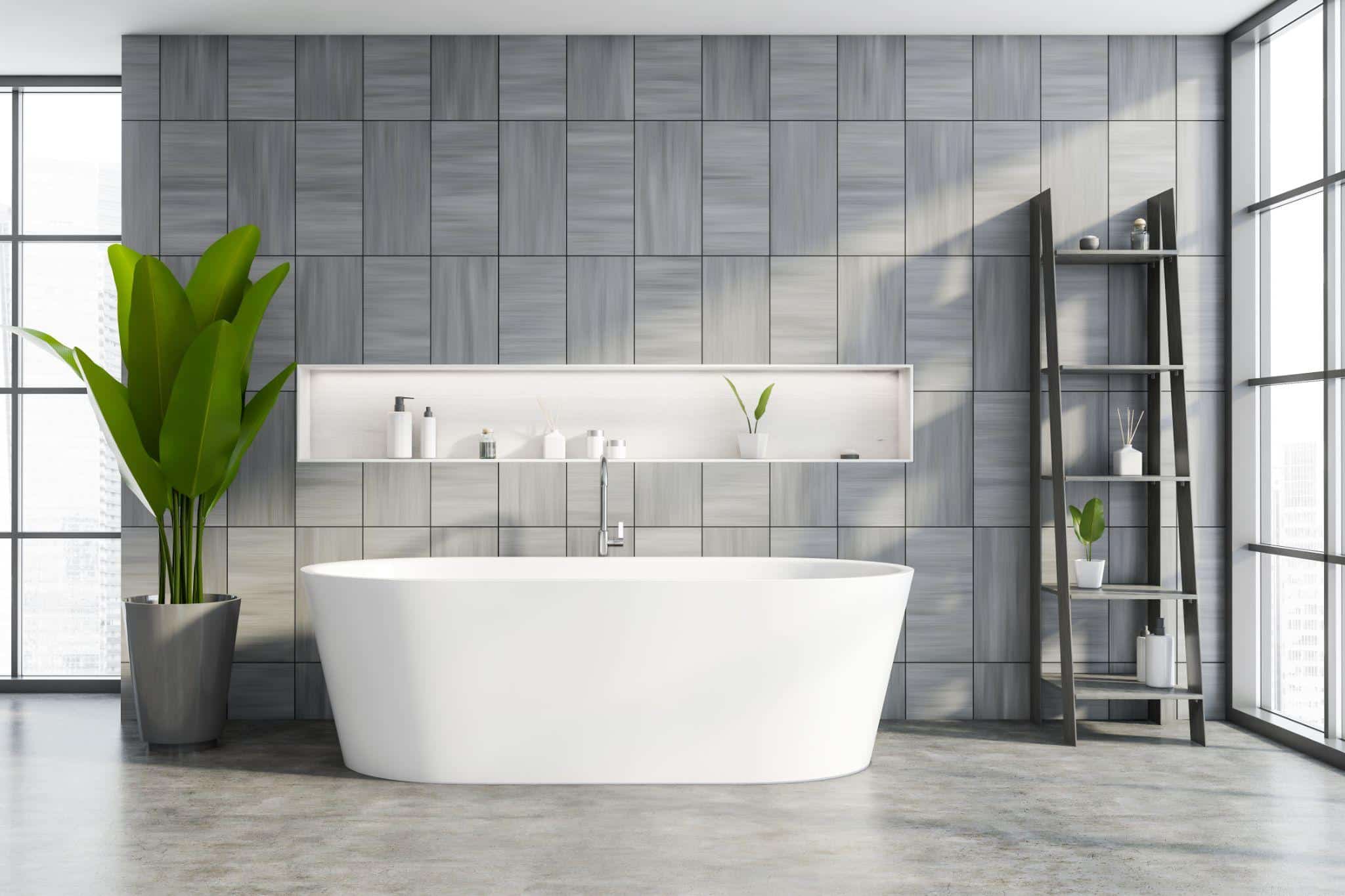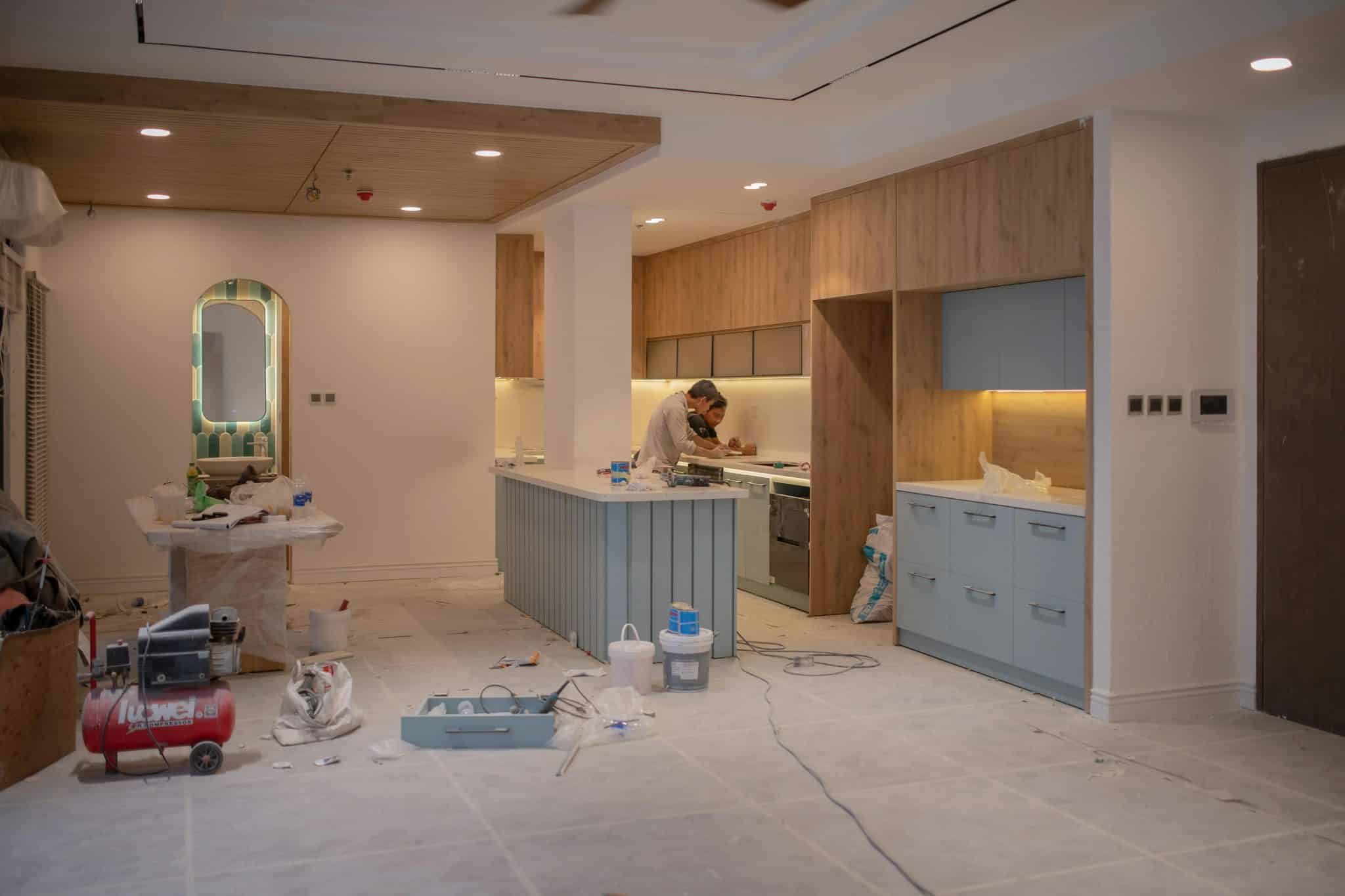Designing a functional, high-performing and stunning bathroom, laundry or poolside space can prove to be almost impossible. With endless tile combinations, you might begin to overlook the functionality behind them. Where moisture thrives, we need to ensure that from drainage to grouting, every design decision can stand up to the challenges of moisture damage.
Whether you’re refreshing an outdated shower or installing a beautiful new outdoor pool space, we have outlined our top tips that combine beauty and function to help you create long-lasting, modern and clean wet spaces in your home.
Understand the Demands of Wet Areas
Wet spaces like bathrooms, laundries, and even some kitchens come with their own set of challenges (constant moisture, potential slip hazards, and long-term wear) that can quickly turn small issues into expensive problems. That’s why designing these areas requires more than just picking tiles that look good.
For starters, the grout you choose plays a huge role in keeping wet areas protected. Water-resistant epoxy grouting is often recommended over traditional grout because it’s far less porous, helping to block moisture from seeping through and causing damage beneath your tiles. It also stands up better against staining and mould, which means less scrubbing and longer-lasting results.
Of course, the tiles themselves matter too. When looking for the best tiles for wet areas, think beyond colour and pattern. Prioritise waterproof tile options and finishes designed to reduce slip risk, so your floors stay safe even when wet.
Choose the Right Tile Material for Wet Spaces
When we choose the tile materials for the bathrooms and laundries, we also have to think beyond style, durability, and maintenance.
- Porcelain tiles have low water absorption rates. They are a great choice for showers and floors, especially in high-traffic bathrooms.
- Natural stone tiles can be beautiful, but may require sealing to resist water and stains.
- Mosaic tiles can add interesting texture and slip resistance underfoot, but will create more grout lines to clean and maintain.
In the wet areas of our home, our tile choices for durability and long-lasting appeal are often about striking a balance between aesthetics and function, for a space that stays looking fresh and free of damage.
Prioritise Drainage
Proper drainage is essential in preventing leaks, standing water and long-term damage to your wet spaces. Make sure to slope your floors towards the drain, using modern drainage systems and maintaining grout to prevent issues. Without proper drainage, your bathroom or wet space is subject to further damage and repairs.
Linear drains remain a popular choice amongst professionals and passionate homeowners, providing a sleek and easy-to-install alternative to traditional drainage.
Experiment With Size & Layout
The size of your tiles matters and affects more than just aesthetics. Laying larger tiles on the floor can be easier to clean and uses less grout. In contrast, smaller tiles, although they use increased grout, provide more grip and flexibility within small spaces.
It is recommended that smaller tiles be used in small areas, for shower floors or as an accent to a bigger space. On the other hand, larger tiles are better suited to walls and open floor plans.
Tiling your walls, shower or backsplash can elevate wet spaces whilst protecting your surfaces from moisture. Using vertical tiling can bring personality and style to your wet areas, whether as a feature wall in your bathroom or colourful backsplash in your laundry.
Recessed Niches
Adding recessed niches in your shower and above bathtubs provides you with functional storage and an attractive accessory in your bathroom. Tiling these in a contrasting colour or using vertical tiles for example, shows you have really thought about the space, adding a touch of professionalism and wealth.
Adding dimension and movement to your wet space, a recessed niche can be a beautiful statement piece when installed well, often paired with LED lighting for a cohesive effect.
High-Quality Materials
Grout can play a significant role in the longevity and overall appearance of your tiles. Using a water-resistant grout in your wet spaces is stain-resistant, mould-resistant, and low-maintenance, making it perfectly durable in high-moisture or outdoor environments.
Porcelain and natural stone tiles provide a timeless and durable option in your home, while ceramic and vinyl provide those on a budget with a practical alternative, still maintaining quality and longevity.
No matter which materials you opt for, maintenance is essential to keep your tile installations clean and free of damage. Professionally seal and regrout as advised upon installation to get the best result from your new wet space, using gentle cleaning solutions regularly.
Using Textures
Texture can also be an important factor in terms of safety, particularly when it comes to wet areas. Slip-resistant tiles in a matte or lightly textured finish are often the preferred choice for bathrooms, laundry and pool surrounds as well as for outdoor areas, because they offer additional grip and safety where it’s most needed.
Glossy tiles on the other hand can become dangerously slippery when wet. Matte and textured tiles can also help prevent water marks and soap scum from showing, making floors easier to keep clean between deep cleans. When shopping for tiles for wet areas, look out for slip ratings (such as P4 or P5) on tiles or ask about waterproof tile options specifically designed with safety and style in mind.
Tiling Your Ceiling
It might seem a little unexpected, but tiling your ceiling is one of those ideas that makes perfect sense in a wet space. Bathrooms and laundries are constantly exposed to steam and humidity, which can eventually lead to peeling paint, mould, or water stains on the ceiling.
By tiling overhead, you add an extra layer of protection that stops moisture damage before it starts – plus, it creates a seamless, spa-like look that ties the whole space together.
Maintain Your Tiled Wet Spaces
Maintaining a high standard of cleanliness is essential even in the most well-designed wet areas. Regular cleaning of tiles using mild non-abrasive products will help to avoid the build-up of soap scum and minerals. Spraying a mould-inhibiting solution into the grout lines will also help to prevent mildew.
Natural stone tiles should also be resealed as required and areas that need to be regrouted will also need attention to retain a waterproof finish. Keep on top of minor maintenance jobs to avoid expensive repairs later. It will also ensure that your bathroom, laundry or outdoor area remains not only beautiful but structurally sound for many years.
Create a Wet Space That’s Both Beautiful and Practical
Installing wet spaces in your home requires thought and consideration. With a mindful layout, high-quality materials and professional finishes, you can ensure that your bathroom, laundry or outdoor pool is equally beautiful as it is durable.
So, experiment, lean into the bold and make practical decisions on your journey to achieve an elegant, modern and high-performance home!








